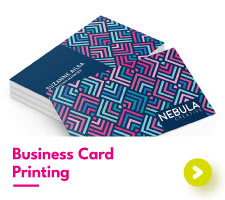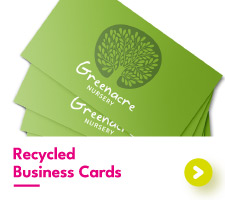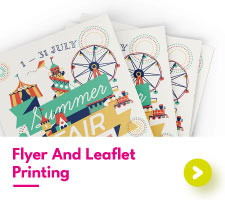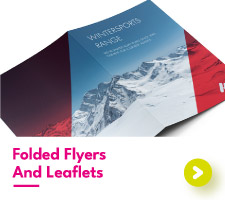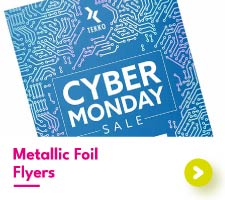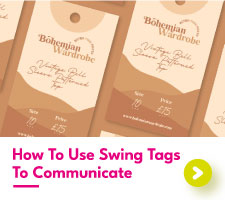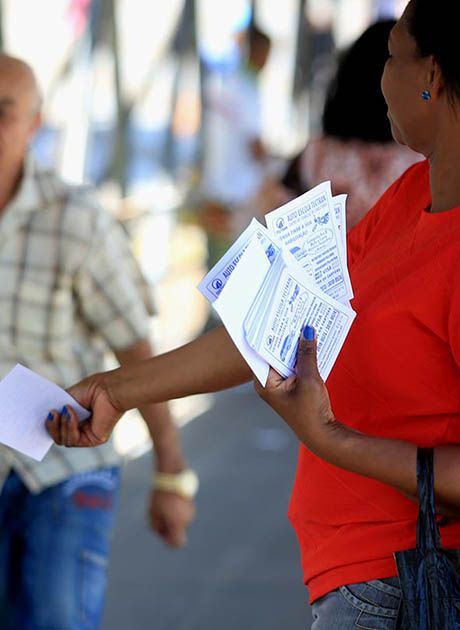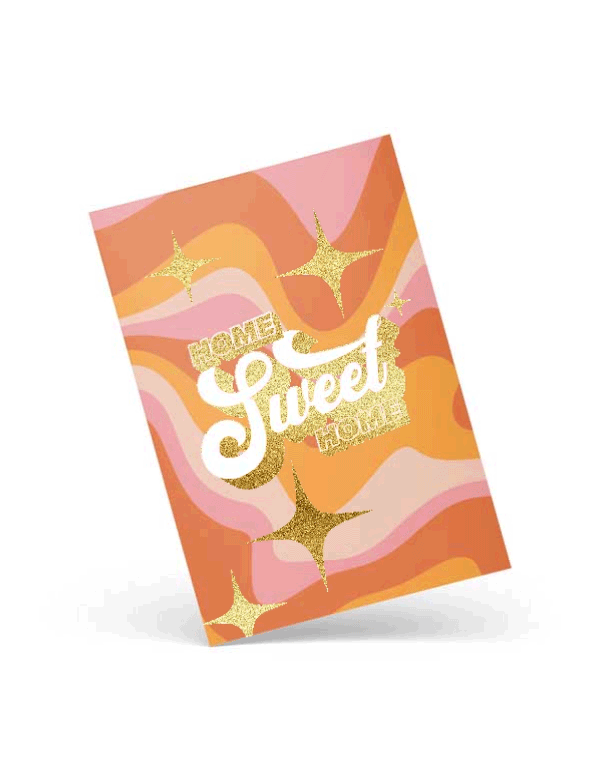Print Green, Promote Clean: Mastering Eco-Friendly Flyer Creation
Is Sustainable Printing a Contradiction?
Creating professionally printed flyers in an eco-friendly fashion may initially seem contradictory – after all, we’ve used organic materials from plants and animals to create surfaces for printing and writing for centuries now (dating back to the ancient Egyptians who used papyrus plants to create the first portable writing surfaces!).
Today, print is no longer just a single sheet, after all, modern printing often involves hundreds or thousands of flyers for marketing campaigns alone. In 2019, the US imported a staggering $17.3 billion of paper, dropping slightly to $15.69 billion in 2020. With such enormous resource demands, the environmental impact of traditional printing has raised legitimate concerns.
But does effective marketing have to come at the expense of our planet? At Aura Print, we believe the answer is a resounding no. The print industry has, and continues to, evolve dramatically, with sustainable printing no longer equaling a sacrifice in quality for its environmental benefits.
Why Choose Eco-Friendly Flyers?
Corporate Social Responsibility (CSR) has become increasingly important in today’s business landscape. Companies and their customers now recognize the vital importance of sustainable business practices, driving demand for eco-friendly products – including printed materials. Research now shows that approximately 30% of UK consumers actively seek environmentally friendly products, with this percentage rising to 37% globally of late. By choosing sustainable printing options, you’re not only reducing your environmental footprint but also appealing to this growing eco-conscious market segment.
Interestingly, The University of Oxford found that 88% of companies actively adopting environmentally and socially responsible processes achieve better operational results than those that don’t, proving that sustainable printing isn’t just good for the planet but awesome for business too, and this is all down to consumers being more environmentally aware than ever before. A recent study found that 73% of UK customers want to be more sustainable, while 80% are willing to pay more for products with environmentally friendly packaging. These statistics reveal a significant opportunity for businesses that embrace sustainable marketing practices.
When your flyers are printed on recycled or sustainable paper, they communicate your brand’s environmental values before a single word is read. This subtle message can significantly enhance brand perception among environmentally conscious consumers, creating a positive experience that extends to your products and services.


The Environmental Impact of Traditional Printing & Paper Production
The traditional paper industry carries a substantial environmental burden worth understanding. Trees harvested for paper typically take anywhere between 15-80 years to grow, representing a significant resource investment. Conventional paper production involves chemical processes that can contaminate waterways, while the industry’s CO2 emissions actually exceed those of the aviation sector. When improperly disposed of in landfills, decomposing paper produces methane, a greenhouse gas more potent than CO2. Additionally, traditional paper production is remarkably water-intensive, consuming approximately 10 liters of water for a single A4 sheet. These environmental costs prompted a revolution in how we approach printing, with sustainable alternatives emerging to address each of these concerns.
As far as the carbon footprint of paper production goes, well, this varies significantly depending on the manufacturing process. Virgin paper (made directly from wood pulp) has the highest carbon footprint, with each ton of paper producing approximately 3.5 tons of CO2. In contrast, recycled paper produces about 1.8 tons of CO2 per ton of paper – a reduction of nearly 50%. This substantial difference highlights why choosing recycled paper for your flyers can make a significant environmental impact, especially for larger print runs.
Are Flyers Recyclable?
Yes! Paper is one of the most successfully recycled materials globally, with recovery rates exceeding 70% in the UK. The environmental benefits of paper recycling are substantial and measurable, with each ton of recycled paper preserving approximately 17 trees, saving 4,000 kWh of electricity, conserving 7,000 gallons of water, reclaiming 3 cubic yards of landfill space, and preserving 60 pounds of air pollutants from being released. These impressive statistics demonstrate why proper recycling is crucial, and why choosing recycled paper for your flyers creates a virtuous environmental cycle.
As far as flyer recyclability goes, unlaminated paper flyers are recyclable, but the process starts with proper disposal. If you put paper in with general waste, it will end up in landfill – exactly what we want to avoid!
Once recycled paper reaches a recycling facility, the process works as follows:
1. Separation and grading into different paper types.
2. Cooking in vats of hot water and chemicals to separate paper from toner, laminates, and other non-paper products.
3. Creation of paper slurry known as pulp.
4. Screening through progressively smaller filters to remove debris like paper clips of staples
5. Processing through rollers to remove moisture and even out the paper
6. Final rolling to the desired thickness before being stored on large rolls
This recycled paper can then be used to create new recycled paper flyers, significantly reducing the environmental impact of your promotions.
But what about recycling laminated flyers and leaflets? Put simply, you can recycle laminated flyers, however the process is a little more complicated. During the recycling process, laminated materials are separated and processed differently. In the pulping stage, the laminate simply floats to the top of the slurry and is removed from the paper fibers, however this is much less efficient than recycling unlaminated flyers. For the most environmentally friendly approach, consider using unlaminated flyers or exploring biodegradable lamination options.
8 Ways to Create Truly Eco-Friendly Flyers
1. Choose Recycled Paper


Using recycled paper for your flyers is one of the simplest ways to reduce their environmental impact. At Aura Print, we offer a range of eco-friendly and traditional paper options that maintain the premium look and feel your brand deserves.
Our recycled paper options include 100% Recycled Uncoated for a natural feel with minimal impact, along with Cotton, Cannabis, Rag, Wheat, and more, all making use of natural resources. Each option provides different aesthetic qualities while significantly reducing your carbon footprint compared to virgin paper.
2. Opt for Kraft Paper


While it might not be common knowledge, white paper is the result of bleaching wood pulp, which is naturally brown. Unbleached, chlorine-free Kraft paper offers an excellent eco-friendly alternative.
Kraft paper flyers add a natural, rustic feel to your marketing materials, making them ideal for brands with an organic aesthetic. As arguably our most eco-friendly paper option, kraft paper is perfect for businesses looking to emphasize their green credentials.
3. Use Plant-Based Toners and Vegan Inks


At Aura Print, all our toners are plant based, meaning no animal products are used in the creation of our printed materials. This makes our printing process technically vegan (though its difficult to verify whether all component chemicals were tested without animal involvement).
Traditional printing inks often contain animal-derived ingredients such as bone char, gelatin, and shellac. Our plant-based alternatives deliver vibrant colors and excellent print quality without these problematic, and downright icky, ingredients.
Combined with our energy-efficient printing equipment, our plant-based toners make our printing process as eco-friendly as possible.
4. Consider Biodegradability


Since flyers are made from natural materials, they are biodegradable. However, there is no standardized rating for how long flyers take to decompose completely – it depends on the amount of print coverage and any other finishing processes involved in the creation of the flyers. Because of this, we always recommend recycling rather than disposing of paper flyers in general waste / landfill. Although paper can break down naturally, some chemicals used in paper production, such as bleach, aren’t ideal for returning to the soil.
For truly biodegradable flyers, consider options like wheat or unbleached kraft with minimal ink coverage. These flyers will decompose more quickly and with less environmental impact if they do happen to find themselves in landfill!
5. Create Flyers People Will Keep


It may seem obvious, but one of the most effective ways to make your flyers more environmentally friendly is to create them with longevity in mind. Create flyers people want to keep rather than immediately discard and you’re winning the environmental flyering game!
To do this, consider including valuable offers or reusable voucher codes on your flyers. For example, multiple-use discount codes or free delivery offers give recipients a reason to hold onto your flyer. Hey, you could even implement a promotion where customers bring their flyer into your store for a specific benefit, allowing you to collect and properly recycled used flyers, preventing flyers from landing themselves in landfill, all while tracking the success of your promotion and measuring your ROI!
You could even consider integrating a useful calendar on the reverse side of your flyer, or include industry-relevant reference material that recipients will want to come back to. Food-related businesses might include recipe cards using their products, while some brands find success with collectible series that form a complete set. Another effective approach is dual-purpose design – creating flyers that can be repurposed as bookmarks, planting guides, or measurement reference cards.
6. Explore Alternative Materials


Beyond traditional and recycled paper, innovative alternatives are emerging in the sustainable printing industry. For example, some companies are now producing paper from agricultural waste – the non-edible stems and leaves left over after harvest.
These agricultural waste papers can have up to 29% lower environmental impact than recycled paper and 47% lower than paper made from trees. While Aura Print continues to explore these options, we’re committed to offering the most sustainable choices available.
Other emerging eco-friendly paper alternatives include stone paper made from calcium carbonate and non-toxic resin (requiring no water or trees), hemp paper produced from rapidly renewable hemp plants (requiring fewer chemicals than traditional paper), and bamboo paper created from fast-growing bamboo (which can be harvested annually without killing the plant).
7. Optimise Print Quantities


One often overlooked aspect of eco-friendly printing is simply printing the right quantities, as overprinting leads to waste regardless of how sustainable your materials are. By calculating your needs and working with us to determining the most efficient production method, you can significantly reduce waste while maintaining marketing effectiveness.
8. Choose Carbon-Neutral Printing Services


At Aura Print, we’re committed to reducing our carbon footprint through energy-efficient practices and sustainable materials. We offer carbon-neutral printing options that offset the unavoidable emissions associated with the printing process. This means that for every ton of CO2 produced during your print job, we invest in carbon neutral paper and energy efficient printing presses. This approach allows your business to maintain a lower carbon footprint while still benefiting from effective print marketing.
Making Your Flyer Campaign Environmentally Responsible
When planning your flyer distribution, consider several environmental factors for maximum sustainability. Target your flyer distribution to relevant audiences rather than opting for blanket coverage, and ensure recycling bins are available when deciding where to hand out flyers. Incorporate QR codes that link to digital content to reduce the need for extensive printed information, and design your flyers to use the minimum amount of paper necessary while maintaining impact. Plan distribution routes to minimize transportation emissions, and consider using flyers as part of an integrated campaign with digital elements to enhance effectiveness while reducing overall print volume.
Case Study: Sustainable Flyer Success
A local organic food retailer partnered with Aura Print to create an eco-friendly flyer campaign promoting their seasonal produce. Using our 100% recycled uncoated stock with plant-based toners, they created flyers that included a seasonal produce guide that customers would keep for reference, a QR code linking to recipes using seasonal ingredients, and a reusable discount code for organic products.
The result? A 32% increase in store visits, with 47% of customers specifically mentioning the flyer when redeeming their discount. The business collected returned flyers for recycling, creating a closed-loop system that reinforced their environmental values.


The Future of Sustainable Flyer Printing
As technology advances and environmental awareness grows, the sustainable printing industry continues to evolve. At Aura Print, we’re committed to staying at the forefront of eco-friendly printing innovations, offering our customers sustainable options without compromising on quality.
Emerging trends in sustainable printing include algae-based inks derived from renewable and biodegradable sources, waterless printing techniques that eliminate water from the process, AI-optimized ink usage systems that maximize consumption while maintaining quality and biodegradable coatings that replace traditional lamination. We continuously evaluate these innovations to expand our eco-friendly offerings while maintaining the premium quality of our customers expect.
Choosing eco-friendly flyers no longer means sacrificing quality, effectiveness, or style. With Aura Print’s sustainable printing solutions, you can create beautiful, high-impact marketing materials while maximizing your environmental footprint.
From recycled paper to plant-based toners and energy-efficient printing processes, our sustainable options help your brand demonstrate its commitment to environmental responsibility – a value increasingly important to today’s consumers.

 UK
UK FR
FR
